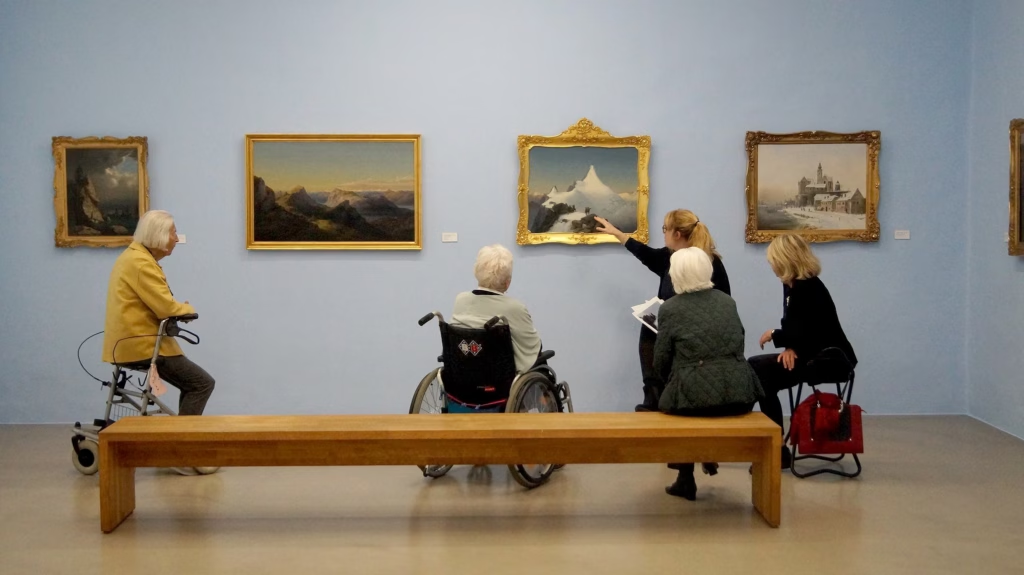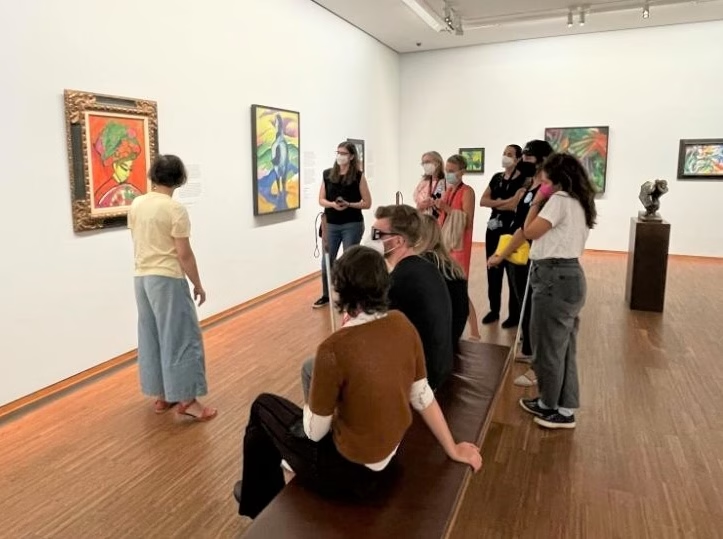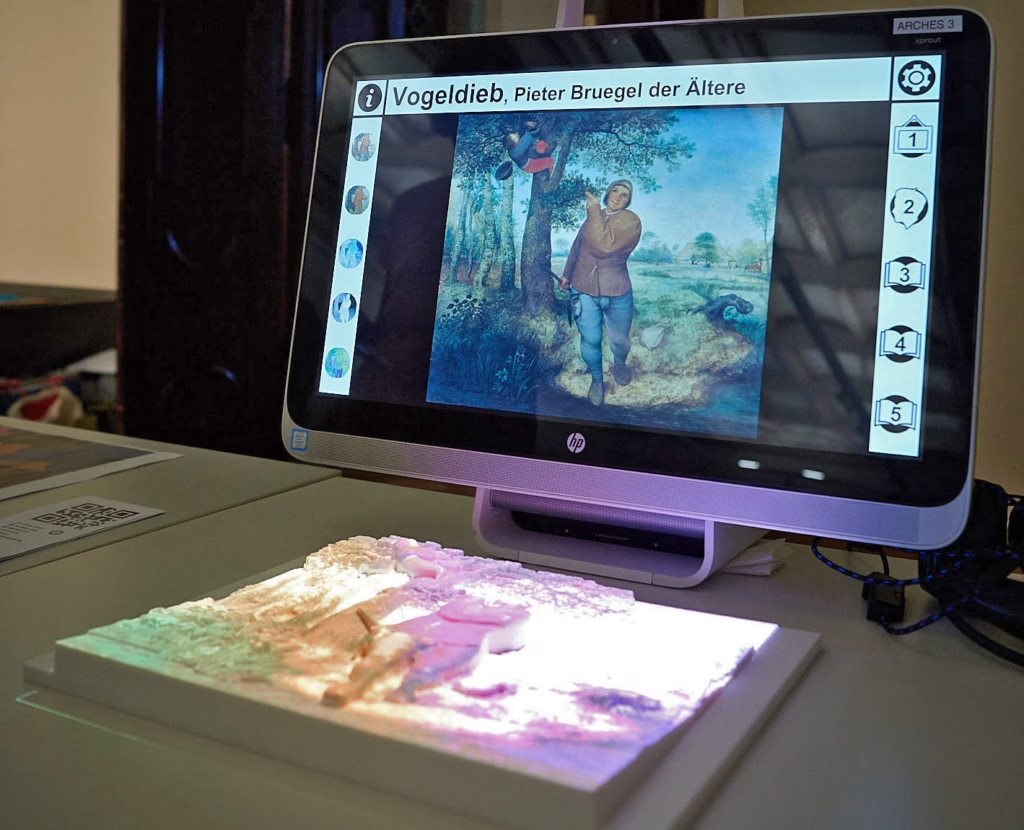The author and editor of the MuseumsGuide inclusive, Doris Rothauer, talks about the importance, opportunities and challenges of an inclusive museum as well as the different approaches to dealing with the topic.

The right to art and culture
During the COVID-19 pandemic, the closure of cultural institutions has made us all experience what we miss when we can't enjoy art and culture, when we don't have access to it: We feel a lack of inspiration, creativity, joy, happiness, and hope. We become anxious, insecure, hopeless, and even depressed.
Art and culture are essential pillars of social development, and cultural participation is a fundamental part of the human experience. This is why access to art and culture is so important for everyone; no one should be excluded.
This principle is already found in the Universal Declaration of Human Rights of 1948: “Everyone has the right freely to participate in the cultural life of the community, to enjoy the arts and to share in scientific advancement and its benefits.”
Yet, in reality, equal participation is particularly difficult for people with disabilities. They face physical barriers and experience social, intellectual, or communication limitations that make it difficult for them to access content and information.
At the same time, many things have changed for the better in recent years, especially in the wake of the experiences surrounding the coronavirus crisis. The question of the social relevance of cultural institutions, and thus also of museums, which was raised during the coronavirus-related closures, has prompted a process of reflection. Topics such as sustainability, diversity, and inclusion have come into focus.
Good to know
But what exactly are we talking about? What is an inclusive museum?
Unrestricted and equal access to art and culture is described with the terms “accessibility” and “inclusion”.
Accessibility means the extensive removal or avoidance of barriers, be they physical, mental, social, or intercultural. Inclusion goes a step further and means participation for all People, regardless of gender, age, origin, religion, education or individual disabilities.
The legal basis for this was created in Austria with the ratification of the UN Convention on the Rights of Persons with Disabilities in 2008 and with the Federal Disability Equality Act of 2006, which has been fully in force since 2016 after a 10-year transitional period.
Being a barrier-free and inclusive museum affects many areas and tasks of museum work, from structural accessibility to exhibition design and service offerings to communication and mediation.
In addition, there are different needs depending on the type of restriction, which should be considered in a linked and interlinked manner if possible.
- For people with reduced mobility, for example, this involves barrier-free access via ramps and lifts, appropriate passage widths and handhold heights, smooth subfloors, accessibility under desks and display cases, disabled parking spaces and disabled toilets.
- Hearing-impaired people need a visual representation of information, for example in sign language, or inductive hearing systems.
- For people with visual impairments, orientation aids that use strong contrasts and tactile aids should be provided, as well as other forms of description and communication that include not only facts but also moods.
- In cases of intellectual barriers and learning disabilities, information and texts in so-called easy language, i.e. short and simple, without compound nouns and without foreign words, are helpful.
Challenges and opportunities
Implementing the various inclusive measures and offerings requires resources and expertise that are not readily available and can often only be developed gradually. Therefore, many museums initially focus on one target group, and expand their expertise and offerings there.
And, if inclusive approaches and accessibility are consistently considered and planned in all activities from the outset, they do not necessarily have to be more expensive or difficult.
A holistic approach, of course, means that inclusion is shared and internalized as a value and attitude by all employees. Many disability associations and social institutions offer awareness-raising and skills training courses that foster understanding of how to deal with people with disabilities and impart methodological or professional competence. This allows the specific needs of the target groups to be better understood and captured. Collaborations also serve to jointly develop customized offerings and innovative new formats. Volkshilfe Österreich, Caritas, and the Austrian Aid Association for the Blind and Visually Impaired are just a few of the institutions that regularly work with museums.

The participatory approach and the path of cooperation not only enables the development of inclusive offers, but also follows a basic premise of people with disabilities: Nothing about us without us. People with disabilities want to be included; self-determination is an essential element of their self-image.
Mediation services go one step further and not only for but also from Offered to people with disabilities. This means, for example, employing people with disabilities as art educators, thus giving them a new role. Interestingly, experience in Germany has shown that these offerings are particularly well-received by people without disabilities. The way they access art creates new perspectives, not least because the approach is less fact-oriented and allows for more room for emotions.
A similar approach underlies target-group-specific tours and offerings aimed at "people with and without disabilities." Inclusive offerings that are not exclusive. This should be the fundamental understanding of an inclusive museum.
Self-determined enjoyment of art through new technologies
A range of technological tools supports inclusive mediation work and enables self-determined access to art and culture, independent of mediation by trained staff.
For example, handcrafted tactile reliefs that recreate exhibits for the senses have long been in use. An Austrian research institution, the VRVis Center for Virtual Reality and Visualization, is leading the development of the latest computer-generated reliefs.
Compared to handcrafted reliefs, computers enable precise reproduction and reproducible results. With paintings, a particularly challenging task, the image information is translated into a three-dimensional impression that makes all levels of depth perception, as created by the brain when we see, tangible. Originally designed for people with visual impairments, the tactile experience can benefit all visitors, especially children or people with cognitive impairments.

Digitalization now supports a wide range of technological tools, such as apps and interactive multimedia guides, that address a wide variety of needs. The range of information channels and perception options is broad: audio tours and descriptions, sound representations, descriptions in sign language and easy-to-read text, background information, and much more.